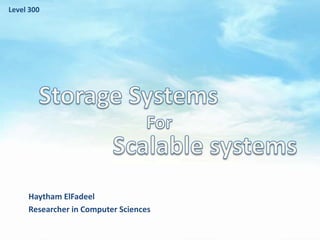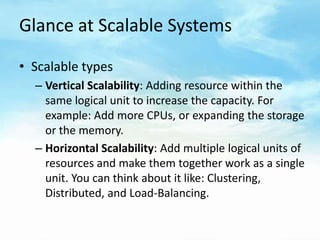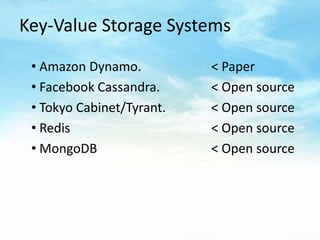The document discusses scalable storage systems and key-value stores as an alternative to traditional databases. It provides an overview of vertical and horizontal scalability. Traditional databases are not well-suited for scalable systems due to their complexity, wasted features, and multi-step query processing. Key-value stores offer simpler data models and interfaces that are designed from the start for scaling across hundreds of machines. Performance comparisons show key-value stores significantly outperforming traditional databases. The document also outlines how key-value storage systems work at the aggregation and storage layers.








































